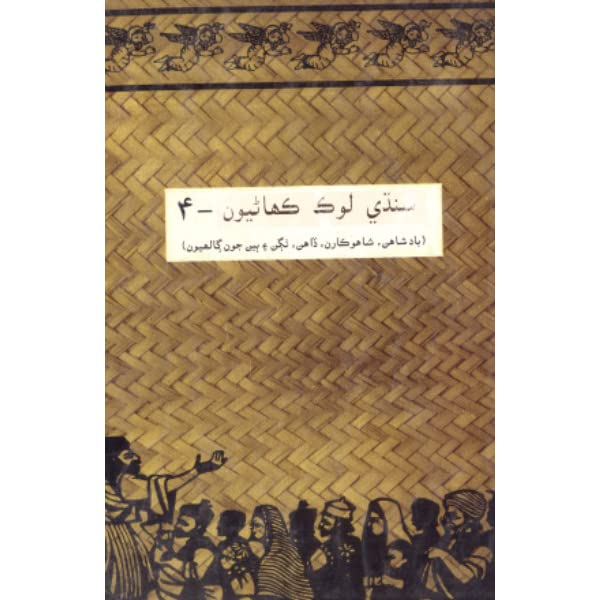
Baloch divided this literature into several broad categories: “Fables and fairy-tales; pseudo-historical romances; tales of historical nature; folk-poetry; folk songs; marriage songs; poems pertaining to wars and other events; riddles; proverbs; wit and humor; and folk customs.”
By Musharraf Ali Farooqi
The Folklore and Literature Project, the forty-two-volume Sindhi folklore collection compiled by the scholar, philologist, and folklorist Nabi Bakhsh Khan Baloch (1917–2011) and published by the Sindhi Adabi Board, is one of the great treasures of world heritage. This literature spans the historic land of Sindh, home to the Indus Valley Civilization (3300–1300 BCE), situated in present-day Pakistan. It is likely that in the folktales preserved in the Sindhi language, we can find the structures and traces of the earliest stories from the Indus Valley Civilization
Baloch divided this literature into several broad categories: “Fables and fairy-tales; pseudo-historical romances; tales of historical nature; folk-poetry; folk songs; marriage songs; poems pertaining to wars and other events; riddles; proverbs; wit and humor; and folk customs.” Of this collection, seven volumes were dedicated to folktales: The Tales of Kings and Queens, Princes and Princesses (vol. 21), Tales of Kings, Viziers, and Merchants (vol. 22), Tales of Fairies, Giants, Magicians, and Witches (vol. 23), Tales of Kings, Money-lenders, Wise-Men, Thugs, and the Common People (vol. 24), Children’s Tales (vol. 25), Fables of Animals and Birds (vol. 26), and Even More Folktales (vol. 27).
Collected from both the oral tradition of the villagers and written records, the stories were gathered and compiled over five years from 1957 to 1961. A network of field workers stationed in each district transcribed the folktales from the oral accounts of villagers in different parts of Sindh. The field workers were instructed to transcribe the tales exactly as they heard them. At the compilation stage, different versions of the same tale were compared, the variants noted, and a final version prepared for publication. Where only a single version for a folktale was found, it was retained with minimum verbal modification necessary to make it readable.
The three tales translated here are drawn from Fables of Animals and Birds, and appear here in their first translations into any language.
In “The Two Sparrows,” our sympathies align themselves with the female sparrow, who is the weaker creature. Her mate wrongs her by eating her food: she is redeemed in a test of truthfulness, and her mate punished. The sparrow encounters a cat―its natural enemy. The cat offers to help the sparrow but demands compensation from her. The sparrow subsequently acts in a dastardly fashion against the cat, but her earlier victimhood has made us blind to her cruel actions. Instead, the cat’s humiliation brings a smile to our faces. There is the perception that the sparrow has defied a tyrant. It is one of those rare stories in which the character of the saviour is punished. Could it be on account of the cat not following the natural order of things and eating the sparrow?
“The Two Storks” reveals a world where love may not be able to ward off death, but where it wields the power to resurrect and make death void. From the moment the stork decides to go into the millet field the she-stork is apprehensive, a fear she expresses in her song of warning. And when the stork is captured and killed, she recourses to the same song whose occult powers make the stork come alive.. And yet the happy reunion of the two birds at the end is still strange. They are together in the phenomenal world, but their lives have different categories. While the she-stork continues to live her natural life, the stork has been raised from the dead, and is living his afterlife.
In “The Great Lord Pabori” we meet an enterprising jackal who uses accidents of fate to his advantage. In another version of the story the jackal asks the tribute of praise from all animals who come to drink from a pond. In both stories the jackal asserts himself against others and is initially successful in his deceit. But both stories end with the jackal retiring from the scene in ignominy before powers greater than him.
While translating these folktales I became aware that some of them were identical to the folktales I had heard told in Urdu at home. At the time of Partition my grandparents and parents had emigrated from Uttar Pradesh in India to Sindh, Pakistan, where I was born. I acquired Sindhi at school when I was ten, but was not exposed to its folklore. The folktales I heard in my childhood from family members were the folktales of Uttar Pradesh. For me, finding the links between these tales from two geographically distant regions, separated now by the boundaries of nation states, was a fresh reminder that a people may partition their home, but the home of one’s cultural heritage is not so easily partitioned.
_______________________
Musharraf Ali Farooqi is an author, novelist and translator. His novel Between Clay and Dust was a finalist for the Man Asian Literary Prize 2012. His earlier novel The Story of a Widow was longlisted for the 2010 IMPAC-Dublin Literary Award. His children’s fiction includes the picture book The Cobbler’s Holiday Or Why Ants Don’t Wear Shoes, the novel Tik-Tik, The Master of Time, the collection The Amazing Moustaches of Moochhander the Iron Man and Other Stories and the YA novel Rabbit Rap. He is the author of the critically acclaimed translations of Urdu classics, The Adventures of Amir Hamza, and the first book of a projected 24-volume magical fantasy epic, Hoshruba.
Courtesy: Words Without Borders